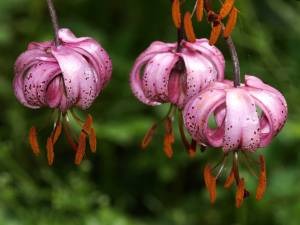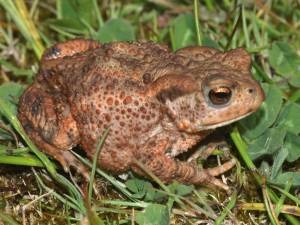Dr Phil Smith’s Wildlife Notes
June 2009
That hoary old chestnut of the weather often features in these notes but this year’s drought has been the most extreme in living memory. Despite frequent deluges further inland the Sefton Coast has had very little rain since January. Most sand-dune wetlands had dried up by the start of the month and even the deeper ponds were struggling by its end. Natterjacks Toads had a disastrous breeding season, though I found a few newly metamorphosed toadlets at Birkdale Green Beach on 8th June. However, the news is not all bad. Although some of our grasslands are beginning to look like they did in 1976, several butterflies seem to be recovering from the lows of the last two wet summers. The unprecedented Painted Lady invasion continued into early June, stragglers being seen throughout the month. Later there were good numbers of Common Blue and Small Heath, while Meadow Browns were abundant by the end of the month. Dryer conditions may help to reverse the trend towards denser vegetation smothering the wealth of small plants that can’t cope with competition from tall grasses and scrub. For example, the southern half of the dune-heath triangle at Montagu Road, Freshfield has been invaded by so much scrub in the last few years that that its Heather is now struggling to survive.
Each year, we find several new plants to add to the over 1100 species recorded on the sand-dunes in the last 200 years. Few, however, are as spectacular as the Martagon Lily (Lilium martagon) in full flower near Wicks Lake on 21st June. A few days later, a guided walk on Altcar Rifle Range produced another new species for the coast in the form of a large vetch-like plant that none of us recognised. It turned out to be Goat’s-rue (Galega officinalis), common in the south of England and now spreading north.

Rachael Parks contacted me to recommend the dragonflies at a dune pond west of Range Lane, Formby. Sure enough, its last few dregs of water had attracted an Emperor (Anax imperator), a pair of Broad-bodied Chasers (Libellula depressa) and two pairs of Black-tailed Skimmers (Orthetrum cancellatum). I managed to photograph the female Broad-bodied Chaser egg-laying on the wing.
Reg York’s Ravenmeols Heritage Trail visit for the Sefton Coast Forum on 28th June was fascinating, not only for the many historical features to be seen, but also because I spotted about 60 Black Poplars (Populus nigra) additional to the 500 or so already recorded at Formby Point. I went back the following day to map their positions. The nearby frontal dunes had lots of Pyramidal Orchids – I counted 150 on one north-facing slope – and several Dark Green Fritillaries, another butterfly that seems to be benefiting from the warm weather.
Most visits to the dunes are eventful but one to Birkdale on 16th June was really special. Patricia Lockwood and I found several colourful dragonflies on the rapidly drying ponds; about 30 Bee Orchids (Ophrys apifera) graced adjacent dune slopes, while Early and Southern Marsh-orchids (Dactylorhiza incarnata and D. praetermissa) studded the slacks, together with the much rarer Baltic Rush (Juncus balticus), Flat-sedge (Blysmus compressus) and Slender Spike-rush (Eleocharis uniglumis). An extraordinary salmon-pink Common Toad (Bufo bufo) was spotted in the grass but the real highlight was four young Stoats (Mustela erminea) playing together on a footpath a few yards away. We watched them for about ten minutes as they dashed about, leaping and tumbling, sometimes diving in and out of a nearby ditch. Neither of us had seen anything like it before.

